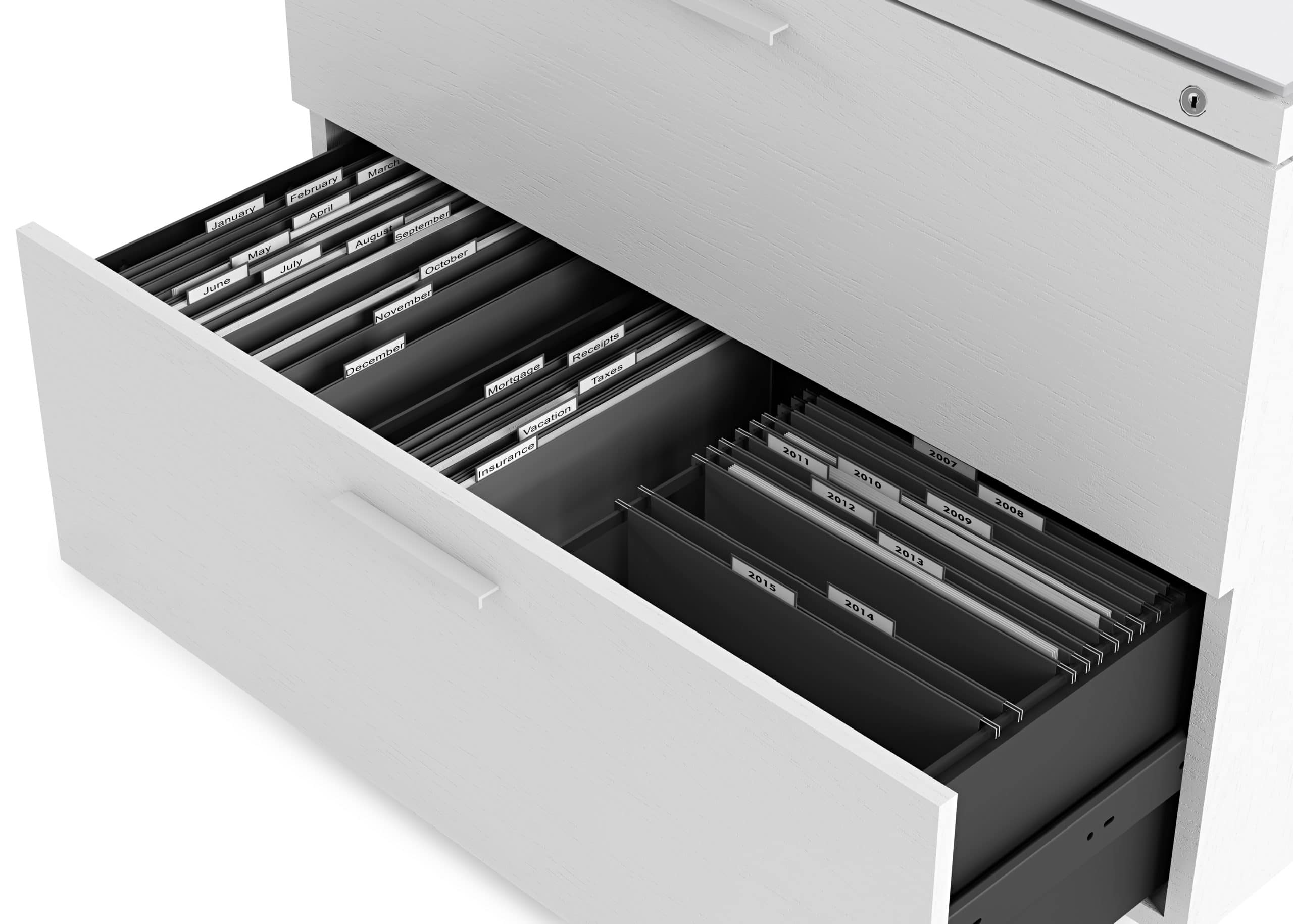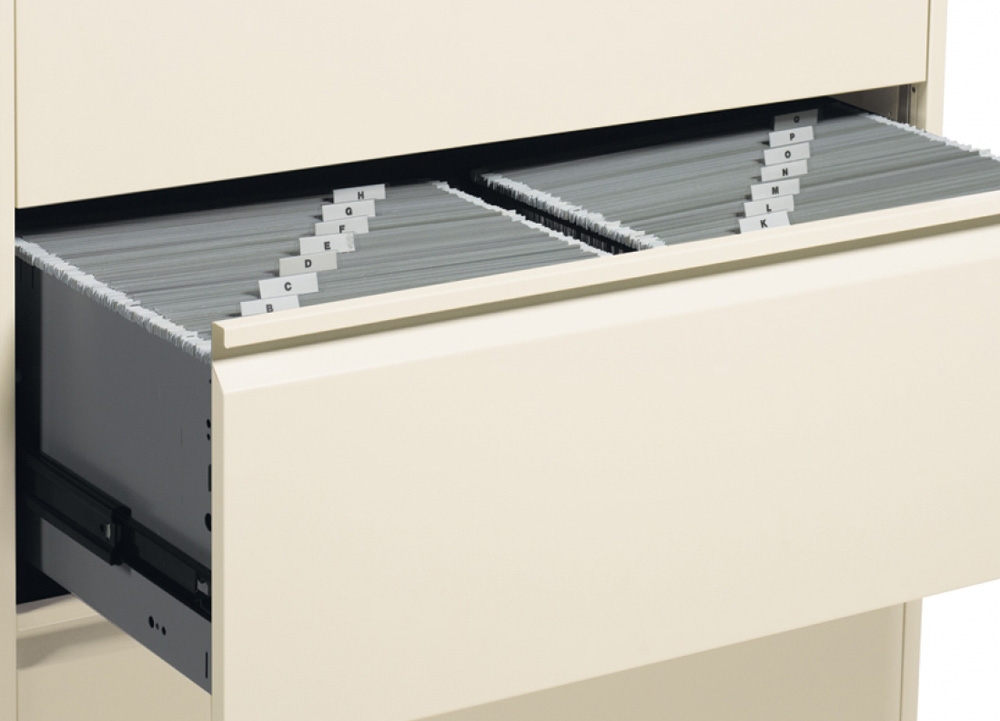Types of File Bars for Lateral File Cabinets

File bars are essential components of lateral file cabinets, providing a sturdy and organized framework for storing and retrieving files. These bars come in various designs and materials, each offering unique advantages and disadvantages.
Materials Used in File Bars
File bars are typically constructed from steel, aluminum, or plastic. Each material offers distinct properties that influence durability, capacity, and cost.
- Steel: Steel file bars are known for their exceptional strength and durability. They can withstand heavy loads and are resistant to bending and warping. Steel bars are typically coated with a protective finish to prevent rust and corrosion. While they offer superior strength, steel file bars are generally heavier than other options, making them less convenient for frequent adjustments.
- Aluminum: Aluminum file bars offer a good balance of strength and lightweight construction. They are less prone to rust than steel, making them suitable for environments with high humidity. Aluminum file bars are often preferred for their ease of handling and adjustment. However, they may not be as strong as steel bars and may not be suitable for extremely heavy loads.
- Plastic: Plastic file bars are the most affordable option, often used for lighter-duty applications. They are lightweight and easy to handle, making them suitable for frequent adjustments. However, plastic bars are not as durable as steel or aluminum and may not be suitable for heavy loads. They are also more susceptible to damage from scratches and impact.
Types of File Bars
Different types of file bars are available, each designed to accommodate specific filing needs.
- Standard File Bars: These are the most common type of file bar, designed for general-purpose filing. They typically feature a straight design and are available in various lengths to fit different lateral file cabinets.
- Adjustable File Bars: Adjustable file bars allow for customization of file storage space. They feature adjustable lengths and heights, enabling users to optimize the space within their lateral file cabinets.
- Hanging File Bars: Hanging file bars are designed for use with hanging file folders. They typically feature a curved or angled design that provides support for the hanging folders, preventing them from falling or collapsing.
- Specialty File Bars: Specialty file bars are designed for specific filing needs, such as oversized files, maps, or blueprints. They may feature wider spacing, heavier construction, or unique designs to accommodate these specialized items.
Comparison of File Bar Types, File bars for lateral file cabinets
The following table summarizes the key features and specifications of various file bar types:
| File Bar Type | Material | Weight Capacity | Dimensions | Compatibility | Advantages | Disadvantages |
|---|---|---|---|---|---|---|
| Standard File Bar | Steel, Aluminum, Plastic | Varies depending on material and design | Standard lengths and heights | Most lateral file cabinets | Durable, affordable, widely available | Limited adjustability |
| Adjustable File Bar | Steel, Aluminum | Varies depending on material and design | Adjustable lengths and heights | Most lateral file cabinets | Customizable, efficient use of space | Higher cost than standard bars |
| Hanging File Bar | Steel, Aluminum | Varies depending on material and design | Standard lengths and heights | Lateral file cabinets with hanging file drawers | Supports hanging file folders, prevents sagging | May not be compatible with all lateral file cabinets |
| Specialty File Bar | Steel, Aluminum | Varies depending on material and design | Custom dimensions and designs | Specific lateral file cabinets or specialized filing needs | Designed for specific filing requirements | Limited availability, higher cost |
Choosing the Right File Bars for Your Needs

Selecting the right file bars for your lateral file cabinets is crucial for efficient organization and easy access to your documents. A well-chosen file bar system can maximize storage capacity, minimize clutter, and streamline your workflow.
Determining the Appropriate File Bar Length and Width
The length and width of your file bars should be carefully considered to ensure a perfect fit within your lateral file cabinet drawers. The ideal dimensions will depend on the size and weight of the files you store, the frequency of access, and the overall storage capacity requirements.
- Measure the Drawer Width: Before purchasing file bars, accurately measure the interior width of your lateral file cabinet drawers. This will help you determine the maximum length of the file bars that can fit comfortably within the drawer.
- Consider File Thickness: The thickness of your files will impact the number of files you can store on each file bar. If you have thick files, you may need shorter file bars to accommodate them properly.
- Leave Room for Movement: To ensure smooth drawer operation, it’s essential to leave some space between the file bars and the drawer sides. A general guideline is to allow at least 1/2 inch of clearance on each side.
Choosing File Bars for Optimal Organization and Accessibility
File bars can be customized to meet specific organizational needs, enhancing accessibility and efficiency in your filing system.
- Consider Your Filing System: If you have a color-coded filing system, you may want to choose file bars with different colored tabs or labels to easily identify specific folders. This can speed up the retrieval process.
- Think About Frequency of Access: For frequently accessed files, consider using file bars with a lower profile or those that extend beyond the drawer front for easy visibility and retrieval.
- Maximize Storage Capacity: To maximize storage capacity, choose file bars that are designed to accommodate the maximum number of files per drawer. This may involve using multiple rows of file bars or selecting bars with a higher capacity.
Selecting File Bars Compatible with Your Lateral File Cabinets
Compatibility with your existing lateral file cabinets is crucial when choosing file bars.
- Drawer Width and Track Systems: Ensure that the file bars you choose are compatible with the drawer width and track systems of your lateral file cabinets. Some file bars are designed for specific drawer sizes and track configurations.
- Check for Compatibility: Before purchasing, verify that the file bars are compatible with your lateral file cabinets. The manufacturer’s specifications or product descriptions should provide this information.
Utilizing File Bars for Enhanced Organization

File bars are indispensable tools for maximizing the organization and efficiency of lateral file cabinets. They provide a structured framework for categorizing and accessing documents, eliminating clutter and streamlining retrieval processes. By implementing file bars, you can transform your filing system into a well-organized and readily accessible resource.
Organizing Files with File Bars
File bars offer numerous methods for organizing files, each catering to specific needs and preferences. Common approaches include:
- Alphabetical Organization: This method involves arranging files alphabetically by client name, subject matter, or any other relevant criterion. It’s ideal for situations requiring quick access to specific files based on alphabetical order.
- Numerical Organization: Files can be organized numerically using a sequential numbering system, often employed for tracking invoices, purchase orders, or other documents requiring numerical referencing.
- Subject-Based Organization: This approach groups files according to their subject matter, allowing for easy identification and retrieval of documents related to specific topics or projects.
Creating Dedicated Sections
File bars can be strategically placed to create dedicated sections within drawers for specific file types or projects. For instance, you can designate a section for active projects, another for archived projects, and a third for client files. This division enhances organization and reduces the time spent searching for specific documents.
Layout Example
Consider a lateral file cabinet drawer with three file bars. The first file bar can be placed at the front of the drawer, creating a section for frequently accessed files. The second file bar can be placed in the middle, creating a section for less frequently accessed files. The third file bar can be placed at the back of the drawer, creating a section for archived files or inactive projects. This layout provides a clear visual distinction between file categories, promoting efficient retrieval and organization.
Just like file bars for lateral file cabinets provide structure and organization to your paperwork, a well-designed bar cabinet can add a touch of sophistication and functionality to your home. If you’re looking for inspiration for a stylish home bar, check out this guide to world market bar cabinets , which offers a variety of options to suit different tastes and spaces.
Whether it’s for storing your favorite spirits or showcasing your collection of glassware, a bar cabinet can be a great way to create a designated area for relaxation and entertaining. Just like file bars help you keep track of important documents, a bar cabinet can help you stay organized and enjoy your favorite beverages in style.
File bars for lateral file cabinets are essential for keeping your documents organized and easily accessible. They can help you to create a more efficient workflow, and make it easier to find what you need when you need it.
And just like you might want to consider installing led hinge lights for cabinets to improve visibility, file bars can also help to illuminate the contents of your files by providing a clear view of each document. Whether you’re looking for a simple solution to keep your files organized or something more robust, file bars are a valuable investment for any office or home office.